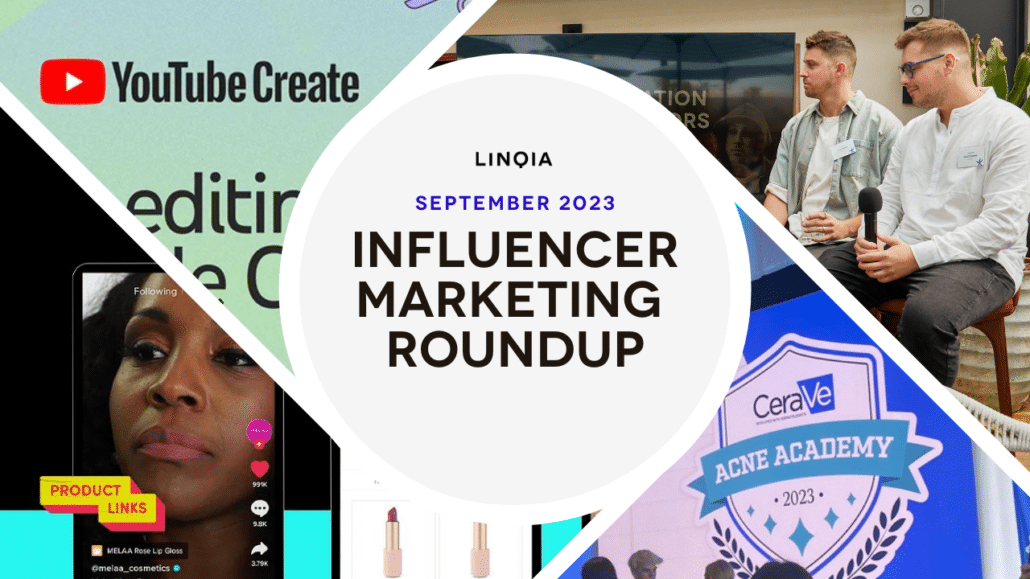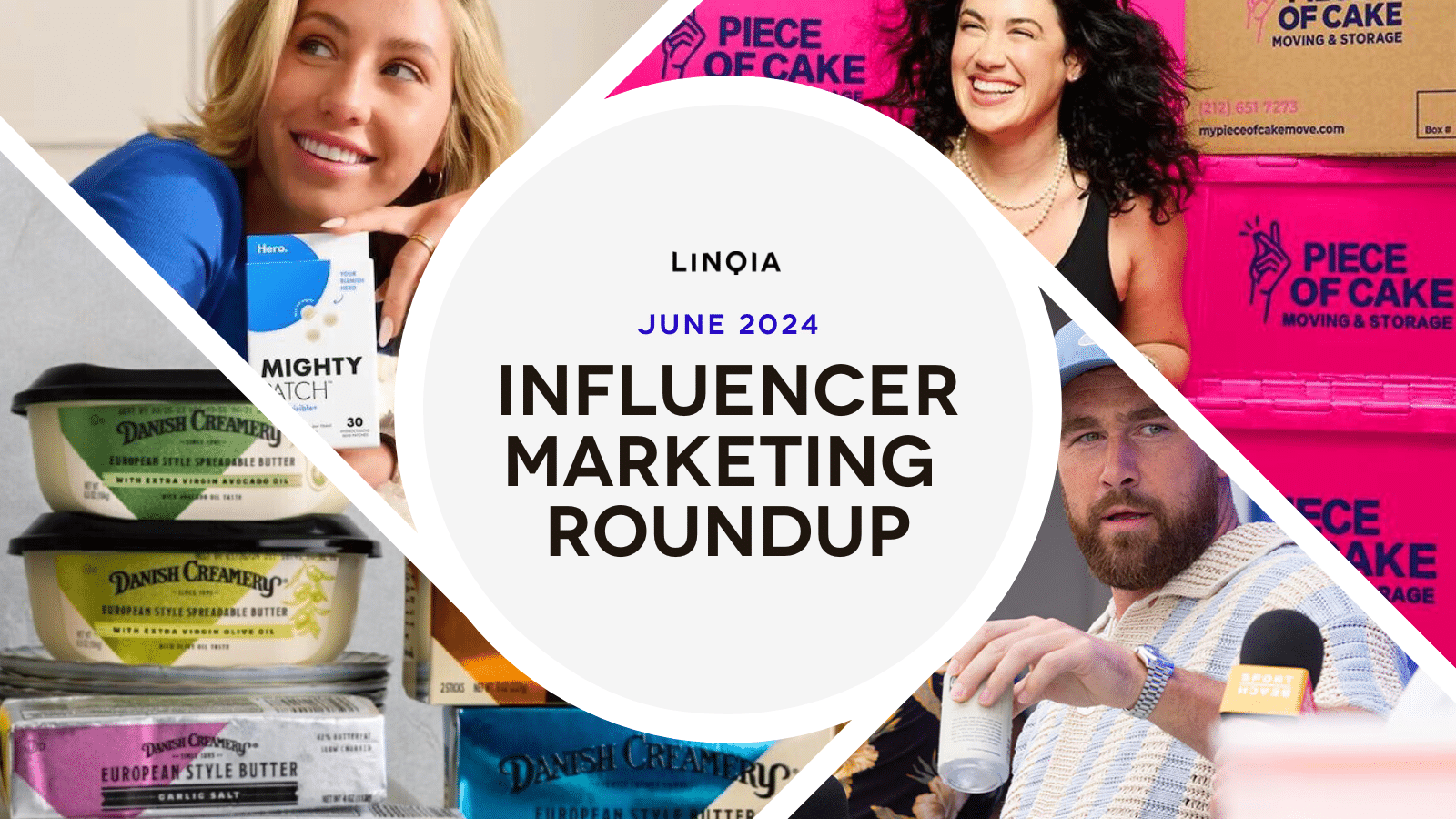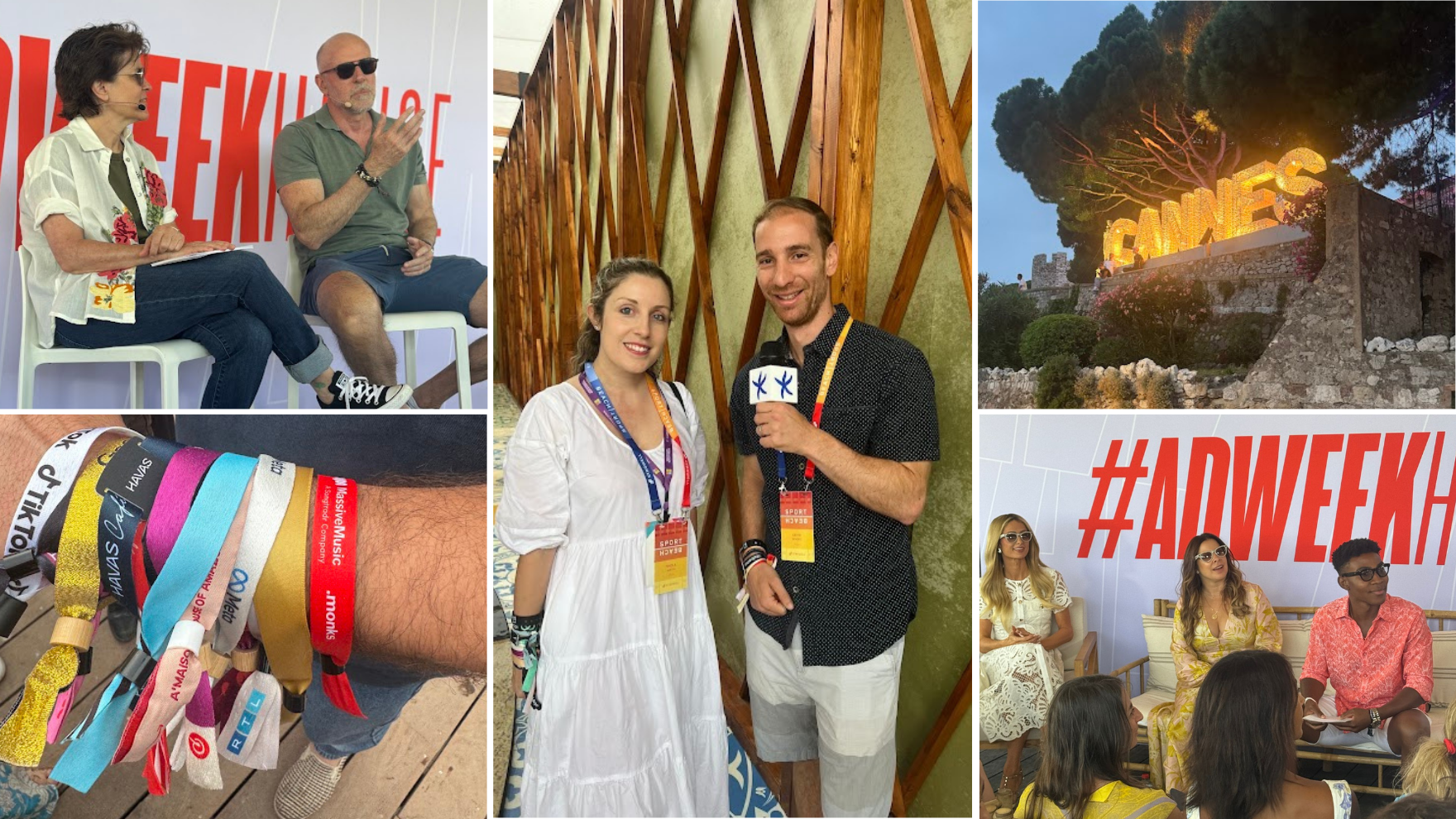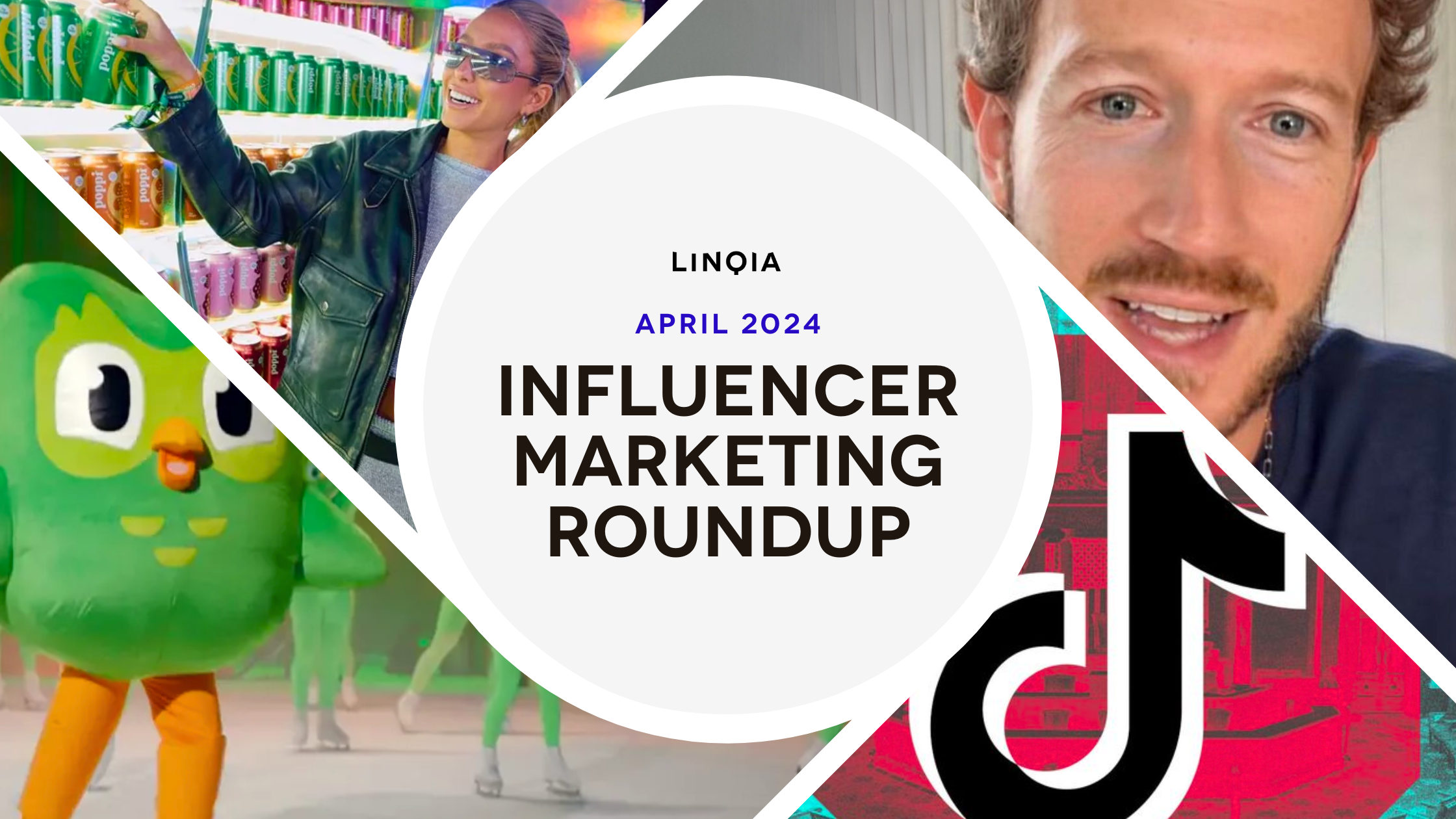Top News and Stories
Below are Linqia’s favorite stories shaping our industry.
TOP SOCIAL NEWS
Southeast Technical University in Ireland will offer the country’s first degree in influencing
TLDR: The degree will focus on content creation and social media, which will include courses in video and audio editing, business, and critical cultural studies. It’s received a mixed response from the general public, some mocking the degree while others point to the critical skills needed that will serve many well in a variety of careers. Regardless of opinion, this is a top target profession for the younger generations (see the Morning Consult report at the end of this newsletter), so the degree will likely be a in high demand.
TikTok rolls out Shop to all US users
TLDR: Shops is officially live for all users and the platform is doubling down. They have extensive partnerships with influencers producing content around the clock, will be offering subsidies for Black Friday discounts up to 50% to encourage users to shop on the app, have officially banned links to outside e-commerce shops, shut down storefronts, and are on track to lose $500 million this year. This is clearly not a short term play, it’s a big long term bet for the Bytedance owned company and it’s a very smart move to position themselves as the social commerce juggernaut over the long haul.
TikTok Introduces Centralized Wallet for In App Transactions
TLDR: The wallet will act as a centralized payments tracking platform, which also includes TikTok’s own in-app currency. These TikTok Coins can be exchanged for virtual items that you can then award to your favorite creators in the app. At present, you can’t do much else with them, but like Meta’s Stars, TikTok could look to build on this as an alternative currency.
TLDR: The new data approach is a way to measure attribution beyond immediate purchases. Current ad tracking fails to associate later product searches with prior ad views, which is going to be the predominant way TikTok influences purchase behavior. This new approach is a hybrid measurement model that mixes click-based attribution with “view-through” tracking.
TikTok Officially Launches New In-Stream Labels for AI Generated Content
TLDR: TikTok will now require users who’ve used AI to create a post in the app to flag it as such, or risk having their content removed if they fail to do so. This will help users quickly identify AI content, but may disincentivize using AI for non nefarious purposes since that label may cause users to automatically associate the content as such.
TikTok Is Exploring a Partnership With Google to Drive Search Traffic
TLDR: The partnership will integrate Google search prompts, and possibly eventually results, into TikTok’s own search stream. Users are now seeing a new prompt appear when they search which includes a CTA to expand their search on Google. The benefits to Google are obvious, we are less certain of what TikTok gets out of this. Potentially a more robust discovery tool for users but is driving traffic to Google worth that gain?
TikTok eyes more social networking features
TLDR: TikTok has concerns that users are sharing TikTok videos externally on other social media and messaging apps when they want to discuss them with friends. So the platform is ramping up its networking features to keep user engagement within the app, which could help the company as it looks to offer functions beyond video entertainment, such as live shopping.
Meta Expands Its Paid Verification Program to Business Accounts
TLDR: The paid verification program will offer businesses the same badge as creators. The program offers businesses better search positioning, meaning businesses may be inclined to buy in so they can increase their visibility.
Meta Considers New Subscription Which Would Enable EU Users to Eliminate Ads
TLDR: This is major news and a giant leap for subscription social media. It’s in response to EU’s Digital Service Act which is significantly more stringent than the US rules, but would be Meta’s first foray into a paid ad free option, which may drive others to adopt the same offering (hint hint X).
TLDR: It was a busy event for Youtube announcing several new features – the four key one’s being 1) Dream Screen, which will enable creators to use generative AI to produce a video or image background for YouTube Shorts. 2) AI Insights, which will offer suggestions for video topics based on the videos that creator’s audience is already watching on YouTube and even generate an entire video outline. 3) Aloud, an audio dubbing technology that automatically translates a video’s audio into other languages, and 4) YouTube Create will compete with ByteDance’s CapCut as a video editing application.
Target announced new influencer storefronts
TLDR: Leading into the holiday season, Target rolled out virtual shops featuring items curated by various creators. It’s another example of a retailer leaning into the power of influencer commerce recommendations, but will influencers see enough volume to warrant their focus on keeping their storefronts up to date? We will have to wait and see.
LinkedIn Adds New Branded Content Library, Listing All Influencer Campaigns in the App
TLDR: After rolling out its own branded content tags for posts last month, LinkedIn has now also added a new search functionality for branded content partnerships, which will enable users to explore all of the affiliate marketing campaigns that have used the new tags in the app.
X Tests New Option That Would Enable Creators to Gather Email Contacts From Subscribers
TLDR: Subscribers can share their email with a creator they follow (if they choose), which would provide creators with full access to an off-platform contact method for each opted-in subscriber. Sharing contact information is a contentious topic for social media platforms as most feel they own that connection because they’ve facilitated it in the first place. But creators certainly want to be able to own their audiences, so this is a step in the right direction for them.
Reddit introduces a potential revenue stream
TLDR: The “Contributor Program” allows qualifying users to earn real money for their Reddit posts. These earnings, given out monthly, will be based on how many upvotes posts amass. With the Contributor Program, Reddit is following in the footsteps of other social platforms looking to entice content creators with a potential source of income.
BRAND INFLUENCER HIGHLIGHTS
- How Not Your Mother’s is leveraging its viral Curl Talk moment with influencers as wavy hair routines thrive
- Hyundai’s Chocolate TikTok Duets are a homerun
- Clinique taps college students to be brand ambassadors
- The NFL gives creators access to its archives for content creation with pre-approved footage
- How Cerave’s influencer event doubled as an enormous content studio
- Dunkin’ taps Ben Affleck, Ice Spice to put a name to its new fall drink
- Green Giant taps Corn Kid’s enthusiasm for first national campaign in 7 years
- Panera jumps on a TikTok trend, adds ‘Roman Empire’ inspired menu
- Taylor Swift Inspired Heinz to Make ‘Seemingly Ranch’ a Real Thing
REPORTS & DATA WORTH READING
Linqia releases their much anticipated annual state of influencer marketing report
TLDR: Influencer budgets are increasing (75.5% of respondents’ budgets either increased or remained unchanged vs. 2022), strategies are evolving (macro influencers are now the most in demand tier), and influencer content is being used everywhere (97% of respondents are using influencer content outside of organic influencer posts, with paid social and owned social listed as the top channels, followed by website, email, display, CTV, and OOH). The report is packed with insights so make sure you give it a read.
TLDR: Influencer marketing spending—which encompasses monetary payments to influencers and creator content amplified as paid ads—is projected to grow at a rate of 14% throughout the rest of 2023, more than triple Insiders projection for social media ad spending, which sits at just 4.1%
TLDR: Over 57% of Gen Z’ers surveyed desired influencer roles, outpacing other age groups by 16%. The study also showed that over half (54%) of all adult consumers are following influencers on social media. That percentage is naturally highest among Gen Z, with 81% of that age cohort following content creators, and steadily declines with each older generation. However, the survey found that nearly one in four Boomers follow at least a few influencers.
Wavemaker report shows companies only spend 5% of their influencer campaigns to reach Gen-X users
TLDR: Only 13% of Gen X feel represented by social media ads, while 92% use social media daily. Gen X also represents a burgeoning 28% of TikTok’s user base. Yet, just 5% of brand influencer campaigns aim to reach them. Gen X has considerable purchasing strength, inheriting $70 trillion from the Baby Boomers.




